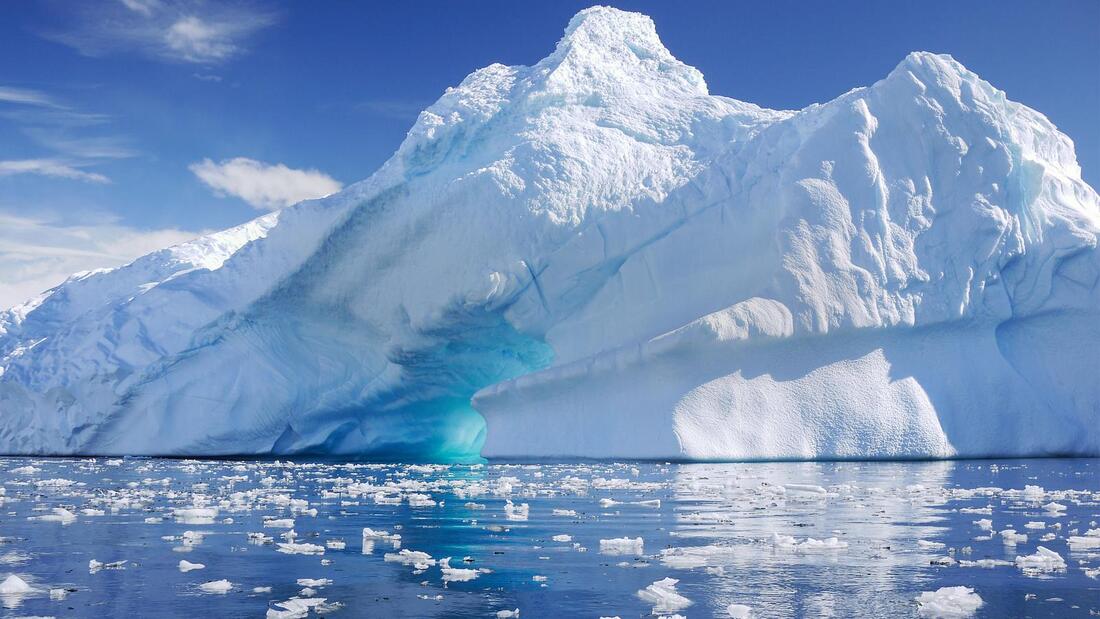?Antarctica is the largest wilderness on Earth. Its glaring white mountains are epic. Its seas are teeming with life. It has a breathtaking presence with moods that shift between calmness and nature’s raw-power. You can’t help but feel insignificant...
?Antarctica is the largest wilderness on Earth. Its glaring white mountains are epic. Its seas are teeming with life. It has a breathtaking presence with moods that shift between calmness and nature’s raw-power. You can’t help but feel insignificant here.
Despite silently lying at the end of the earth, Antarctica is changing – and it is because of us.
Human impacts on oceans and cryosphere – the planet’s snow and ice – are significant and growing. The rapid melting underway in Antarctica will have far-reaching impacts on biodiversity, commercial fisheries and global climate regulation. Increased greenhouse gas emissions, from burning fossil fuels in places such as Australia, have altered large-scale oceanic and atmospheric processes and accelerated ice loss around the continent.
Antarctica is one of the regions of the world where the impacts of climate change are most apparent and pronounced. Temperatures here are rising double the rate of the global average. Sea ice is the key to the Antarctic marine ecosystem, but due to rising global temperatures, it’s being impacted at an alarming rate. Antarctic krill, the keystone species in the Antarctic food web, is contracting southward on the Antarctic Peninsula as sea ice disappears due to warming ocean temperatures. Many species are dependent on krill. Whales, penguins and seals are being impacted already and are at risk of declining as critical habitats and food sources are lost.
Although the challenges of protecting this incredible frozen landscape are great – there is hope. We can create networks of ocean sanctuaries around Antarctica. By establishing Marine Protection Areas (MPAs), large regions of ocean in our last wild places can provide nature space to adapt. The International Panel on Climate Change has recommended that there needs to be an increased number and size of MPAs in order to provide resilience to climate change. Currently, the Commission for the Conservation of Antarctic Living Marine Resources (CCAMLR) has proposals on the table for the creation of three MPAs—in East Antarctica (originally proposed in 2011), the Weddell Sea, and the Antarctic Peninsula. Each would safeguard critical foraging and nursery grounds for Southern Ocean species, including seals, whales, and penguins, and preserve the region’s essential function as a carbon sink.
We need to protect the largest wilderness on Earth today by acting boldly, collaboratively and with a positive legacy mindset.
Despite silently lying at the end of the earth, Antarctica is changing – and it is because of us.
Human impacts on oceans and cryosphere – the planet’s snow and ice – are significant and growing. The rapid melting underway in Antarctica will have far-reaching impacts on biodiversity, commercial fisheries and global climate regulation. Increased greenhouse gas emissions, from burning fossil fuels in places such as Australia, have altered large-scale oceanic and atmospheric processes and accelerated ice loss around the continent.
Antarctica is one of the regions of the world where the impacts of climate change are most apparent and pronounced. Temperatures here are rising double the rate of the global average. Sea ice is the key to the Antarctic marine ecosystem, but due to rising global temperatures, it’s being impacted at an alarming rate. Antarctic krill, the keystone species in the Antarctic food web, is contracting southward on the Antarctic Peninsula as sea ice disappears due to warming ocean temperatures. Many species are dependent on krill. Whales, penguins and seals are being impacted already and are at risk of declining as critical habitats and food sources are lost.
Although the challenges of protecting this incredible frozen landscape are great – there is hope. We can create networks of ocean sanctuaries around Antarctica. By establishing Marine Protection Areas (MPAs), large regions of ocean in our last wild places can provide nature space to adapt. The International Panel on Climate Change has recommended that there needs to be an increased number and size of MPAs in order to provide resilience to climate change. Currently, the Commission for the Conservation of Antarctic Living Marine Resources (CCAMLR) has proposals on the table for the creation of three MPAs—in East Antarctica (originally proposed in 2011), the Weddell Sea, and the Antarctic Peninsula. Each would safeguard critical foraging and nursery grounds for Southern Ocean species, including seals, whales, and penguins, and preserve the region’s essential function as a carbon sink.
We need to protect the largest wilderness on Earth today by acting boldly, collaboratively and with a positive legacy mindset.












